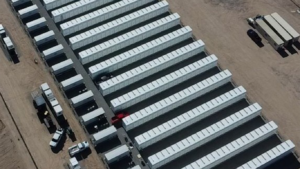Arizona has experienced considerable growth over the last 10 years.
To make sure the growth is accounted for in federal funding, Arizona Governor Doug Ducey has created the Arizona Complete Count Committee (CCC) to ensure the correct population count for the 2020 Census.
“All Arizonans should be counted in the upcoming census,” said Ducey in a statement. “The Arizona Complete Count Committee will help ensure we are reaching out to every neighborhood and community across the state—rural and urban—with a keen focus on historically undercounted populations. My thanks to all members of the committee for dedicating their time to this important effort. I look forward to partnering together in the weeks and months ahead to ensure as full and accurate a count as possible.”
The CCC is comprised of 23 “key community leaders” that represent Arizona’s diverse demography and will partner with federal officials, local complete count committees and grassroots organizations to create outreach strategies and marketing plans leading into census season.
“We are Arizona and we will work with these other committees to just make sure that they have any support that they need. We want to make sure that between all our various committees, we’re reaching every piece of the population in Arizona through communication to let them know what the census is, how they reply, how important it is that they reply and what that all means for Arizona,” Debbie Johnson, CCC chair and Arizona Office of Tourism director, said.
Local committees
A local organization that has already launched a Census 2020 initiative is the Maricopa Association Governments with its iCount 2020 outreach campaign.
The campaign will be focusing on media platforms like television, radio, digital video, mobile, bus wraps, billboards, print and search investments to spread the message across multiple platforms. All ads will be in English and Spanish.
“These messages will continue to develop as we get closer to census day to commitment and participation, and finally to outcomes and performance,” Chandler City Manager Marsha Reed, who also co-chairs the MAG Regional Census Communication Group, said in a statement. “People can also opt in to receive text or email messages.”
The City of Phoenix recently launched its own public-private partnership that will support the iCount 2020 initiative.
On Sept. 12, Phoenix Mayor Kate Gallego announced that the city had partnered with Cisco and Microsoft to power 2020 Census Outreach Vehicles with state-of-the-art technology.
“This public-private partnership with Cisco and Microsoft is the first known census partnership nationwide aimed at bridging the potential of a digital divide in anticipation of the nation’s first-ever online census,” said Gallego.
According to the city, the vans will visit Phoenix’s most undercounted neighborhoods to engage individuals with census information through June 2020.
The Pima Association of Governments has released a census toolkit online.
“There are so many local committees that are doing such fantastic work that the state committee just wants to be supportive of them and look at any gaps that exist in those local committees,” Johnson said. “We’ll fill in those gaps and then just be as supportive as they need us to be from the state level.”
New ways to send in information
The 2020 Census will be collecting data about the number of individuals living in a household on April 1, 2020. These numbers can determine things like federal funding for a state and its number of representatives in the U.S. Congress.
“What’s really important is…federal funding and what kind of funding our state gets based on population,” Johnson said. “It also does make sure that we are represented at the federal level from a legislative, congressional standpoint. Depending on our population, it could mean an additional Congressional seat in the House of Representatives.”
The 2020 Census is also the first census that will allow individuals to respond online or from a mobile device. The other options of phone or mail are still available.
“For the first time ever you can actually reply, put in your census response online, which has never happened before… It makes it a little bit easier. You just get online, you put in your reply and you’re set to go,” Johnson added.
While the census begins on April 1, individuals have the ability to send in responses prior to the date.
For more information on the CCC, click here.




